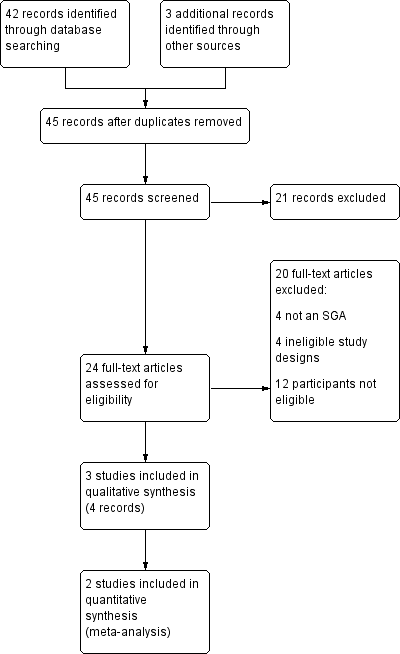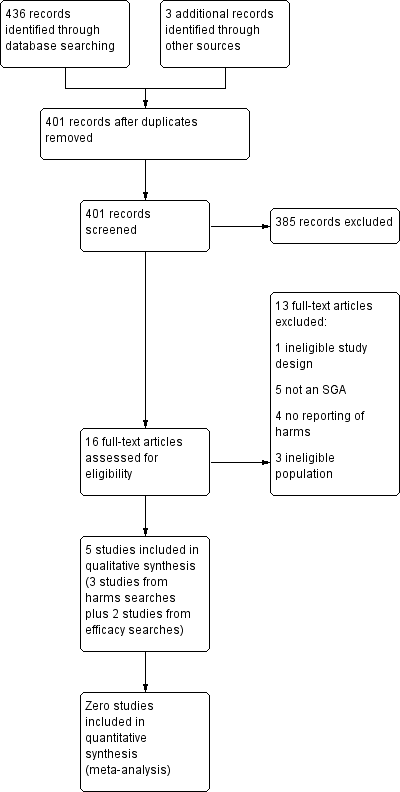Contenido relacionado
Revisiones y protocolos relacionados
Barbara Nussbaumer-Streit, Kylie Thaler, Andrea Chapman, Thomas Probst, Dietmar Winkler, Andreas Sönnichsen, Bradley N Gaynes, Gerald Gartlehner | 4 marzo 2021
Antidepresivos de segunda generación para la prevención del trastorno afectivo estacional en adultos
Gerald Gartlehner, Barbara Nussbaumer‐Streit, Bradley N Gaynes, Catherine A Forneris, Laura C Morgan, Amy Greenblatt, Jörg Wipplinger, Linda J Lux, Megan G Van Noord, Dietmar Winkler | 18 marzo 2019
Sarah E Hetrick, Joanne E McKenzie, Georgina R Cox, Magenta B Simmons, Sally N Merry | 14 noviembre 2012
Katja Komossa, Anna M Depping, Magdalena Meyer, Werner Kissling, Stefan Leucht | 8 diciembre 2010
Sarah E Hetrick, Joanne E McKenzie, Alan P Bailey, Vartika Sharma, Carl I Moller, Paul B Badcock, Georgina R Cox, Sally N Merry, Nicholas Meader | 24 mayo 2021
Andrea Cipriani, Markus Koesters, Toshi A Furukawa, Michela Nosè, Marianna Purgato, Ichiro M Omori, Carlotta Trespidi, Corrado Barbui | 17 octubre 2012
Anna M Depping, Katja Komossa, Werner Kissling, Stefan Leucht | 8 diciembre 2010
Catherine A Forneris, Barbara Nussbaumer‐Streit, Laura C Morgan, Amy Greenblatt, Megan G Van Noord, Bradley N Gaynes, Jörg Wipplinger, Linda J Lux, Dietmar Winkler, Gerald Gartlehner | 24 mayo 2019
Andrea Cipriani, Marianna Purgato, Toshi A Furukawa, Carlotta Trespidi, Giuseppe Imperadore, Alessandra Signoretti, Rachel Churchill, Norio Watanabe, Corrado Barbui | 11 julio 2012
Katja Komossa, Anna M Depping, Andrea Gaudchau, Werner Kissling, Stefan Leucht | 8 diciembre 2010















